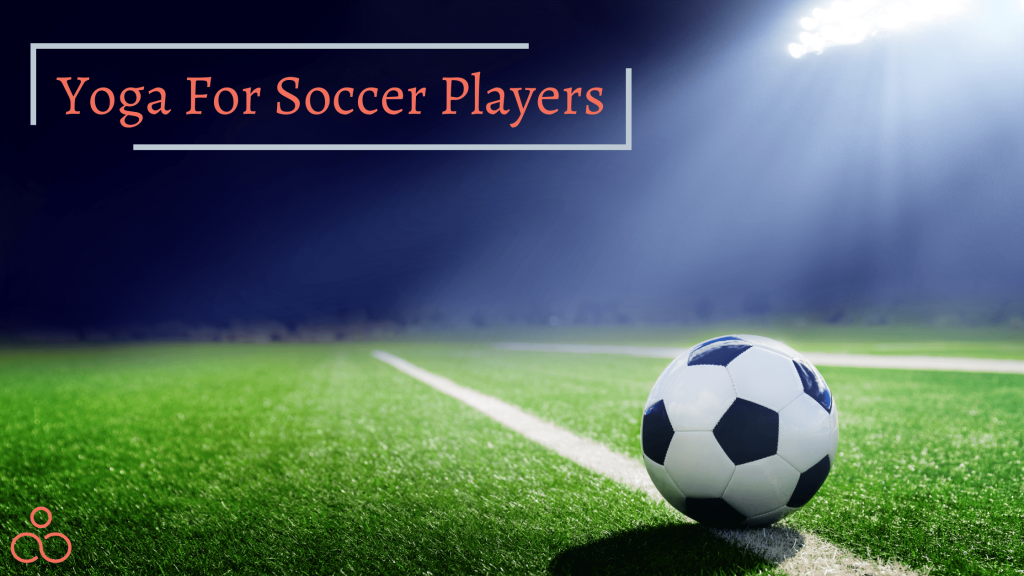Did you know that many players have benefitted from adding Yoga into their fitness and training regimens? Soccer/football players need plenty of training, practice, and time on the field to build up their strength, precision, and stamina. Yoga, on the other hand, is an ancient practice that builds up health and promotes well-being in humans. So what can link these two very different physical activities?
Those who are avid practitioners claim that yoga has made them more flexible and helped them develop their strength. Some claim that it added years to their soccer careers!
Even soccer legends like Cristiano Ronaldo and Lionel Messi have incorporated yoga into their training, vouching for its effectiveness. So can yoga for soccer players help you to score more goals? Let’s get into it.
How Does Yoga Help Soccer Players?
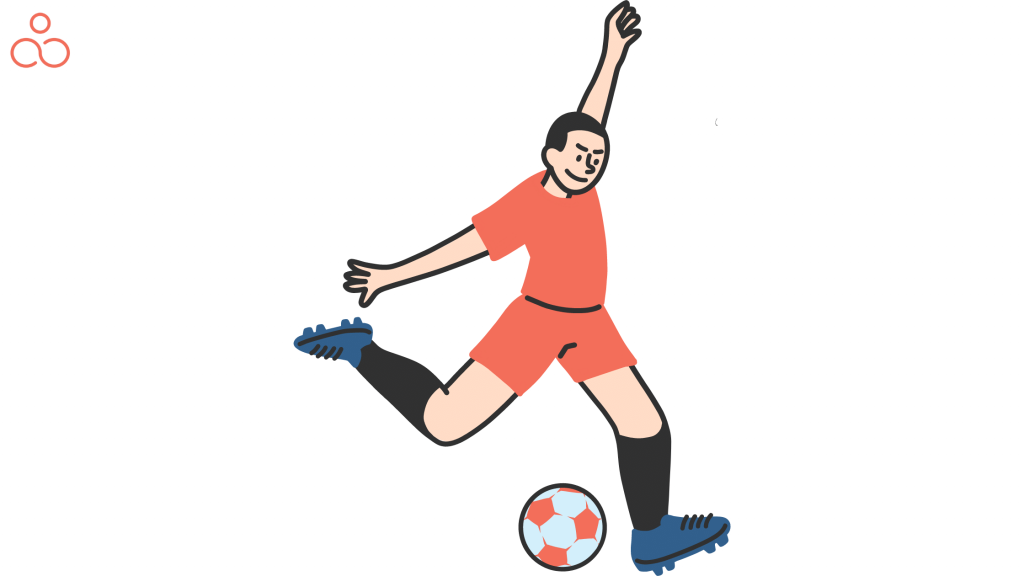
Yoga can help your health, fitness, and well-being in multiple ways. During yoga, you move from one pose to another, using slow movements and taking deep breaths. This not only warms up your body but also helps regulate blood flow throughout your veins and arteries.
When you hold a pose, it helps you build strength. Even though most people think that yoga is an easy and low-effort practice, it actually takes a lot of strength and flexibility to successfully move from one difficult posture to another. Holding difficult poses like the Bow Pose or the Wheel Pose takes a lot out of you. The more you practice holding a pose, the more endurance your body develops. It helps build both stamina and power.
Effectiveness
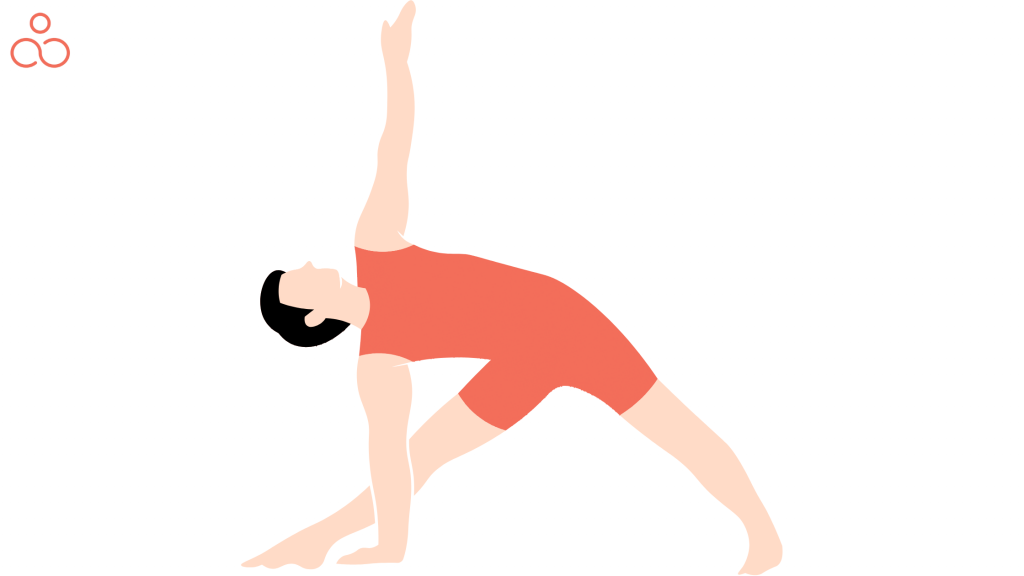
If you want to evaluate the effectiveness of yoga for soccer players, you must consider some real-life testimonies.
Ryan Giggs
One celebrated athlete who had a long-running career in soccer is Ryan Giggs. This Welsh player stayed with Manchester United throughout his career and played for 24 long years! While most players retire by the age of 35, this youthful athlete played soccer well into his 40s.
What was the magic behind his long-running career? Yes, it was yoga. Giggs himself has claimed time and time again that yoga is the secret behind his stamina, health, and energy. He admitted that yoga was tough to handle early on; however, he soon realized that yoga helped him become a more physically sound player.
Jermaine Jones
Another well-known player who reaped the benefit of adding yoga to their fitness regime is the American midfielder, Jermaine Jones. Just like most professional athletes, Jones also had a packed schedule of intensive physical training. So when his trainers proposed that he should do yoga, he was reluctant to try it, thinking it was too easy for his level of athleticism.
Once he gave in to trying yoga, he realized it was a whole new world of physical challenges. Just like many others, he disliked the amount of strength it took to do yoga. However, later he not only understood the value of adding yoga to his training; he also realized it skyrocketed his capacity to stretch.
Effective stretching can be crucial for players to avoid dangerous injuries of body parts that are overworked during a match. Many injuries also occur when players make a thoughtless movement that immediately hurts a tight and/or inflexible muscle. If you enhance your flexibility, you reduce your chance of pulling, injuring, or even tearing a ligament or hamstring.
Frequency
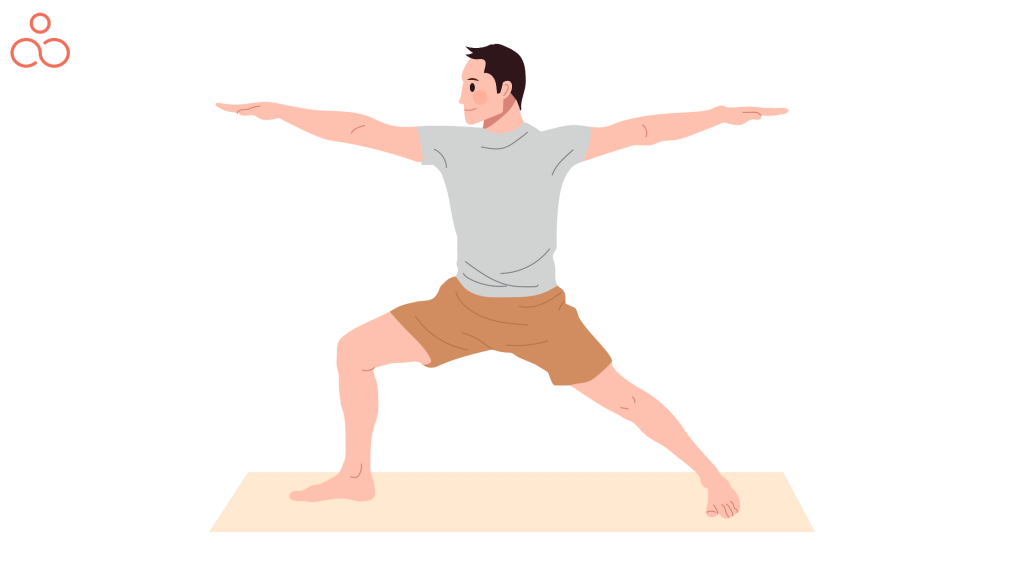
The key is to add yoga for soccer players to your fitness and strength routine effectively. If you play soccer professionally, consider finding a way to include yoga into your training routine. The key is to ease yourself into it without shocking your system too much. Easy steps are the way to go, slowly increasing the time and frequency of your practice.
The best part about yoga is that you don’t have to spend hours on it. It can serve as an extension of your warm-up sessions. Yoga is super simple and low-maintenance, as all you need is a mat. You can either choose to do it before you start training for the day or when you go home after a long day of work.
Stretching for soccer players can be vital for ensuring fitness. In the beginning, your body will be stretched in ways that you are probably not used to, which means that for a while, yoga will hurt. But even if it is an addition to your normal physical wear and tear, the benefits are worth the initial pain. You can do yoga every day or two to three times a week. It is entirely a matter of preference. The key is to stay consistent.
5 Poses for Soccer Players
There are many poses in yoga with different levels of difficulty depending on how demanding each pose is. There are some poses in yoga for athletes that utilize body parts that you need to stretch and strengthen to play soccer. Here are a few poses that you can try out:
Downward Facing Dog
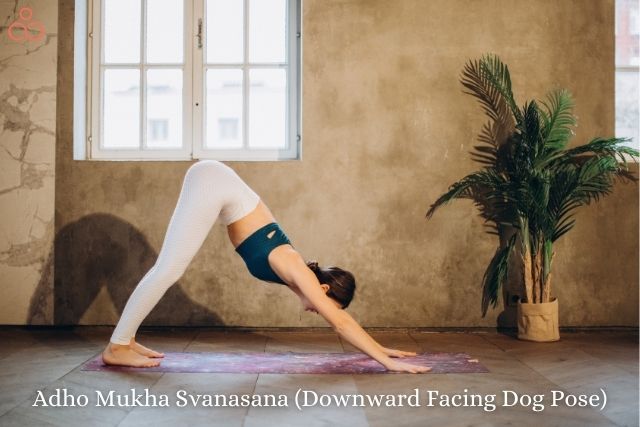
The downward-facing dog pose is a central yoga posture that is incorporated into most common yoga routines. For a pose that has a comparatively low difficulty level, it helps your body and well-being in many ways. The pose is like a stretch that involves your arms and legs. By slowly moving into the pose, you stretch out your hamstrings and calves, both of which are overworked during soccer. By stretching them regularly, you loosen them up and strengthen them so that they gain more endurance.
It also increases blood flow to your spine, brain, and nervous system and stretches and strengthens the abdominal muscles, enhancing your overall well-being.
Steps
- Take a deep breath and get on your hands and knees. Align your wrists and keep them underneath your shoulders. The knees should come close enough to stay underneath the hips without touching each other.
- With your fingers outstretched and your hands placed firmly on the mat, exhale and push backward, lifting your buttocks. Your toes will curl automatically as you initiate the pose.
- As you stretch out, it should look the way a dog tends to stretch, bringing its paws forward in almost an extended bowing posture.
- Straighten and stretch out your back, with your tailbone raised high. Even if your legs are slightly bent, try to straighten them slowly. You will feel your entire body stretch, like an uneven triangle on the mat.
Warrior I Pose
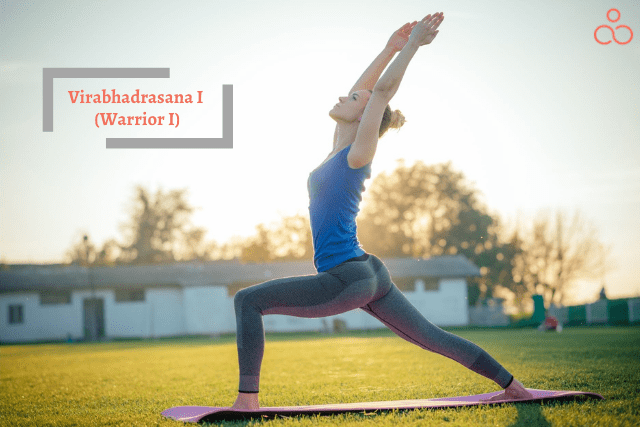
Warrior I is one of the simpler poses in yoga, and it is all about maintaining balance. It is a stretch that involves arms and legs, helping people strengthen their core and develop deep balance.
This pose brings attention to your thighs in a rounded stretch that helps strengthen the quadriceps, hamstrings, and even the groin. This pose also extends the calf muscles and ankles, making them stronger. It also stretches your upper body extensively, including your back, abdomen, shoulders, and arms.
Steps
- Start by standing at the lower half of your yoga mat. Keep your feet slightly apart from each other.
- Step one foot forward as far as you can comfortably reach when preparing for a lunge.
- Keep your front foot aligned with your back feet and make sure your toe is pointing toward the top. Turn your back heel slightly (about 45°), and stretch into a lunge. Make sure your back leg is straight.
- Take a deep breath as you lift your arms over your head, pushing your shoulders low. Your hands should be open with fingers jutting up. Lift your chin as you stretch, your head hanging backwards.
- Stretch into the lunge as your arms reach upwards but keep your shoulder pressed down. Feel the gravity aiding you, pulling your shoulder down.
- Hold the pose as long as possible, then move back to the starting position.
- Repeat the process with the other leg. Try to keep the pose holding time equal for both legs, to keep things balanced. Do not overdo and strain your leg.
Half Front Splits Pose
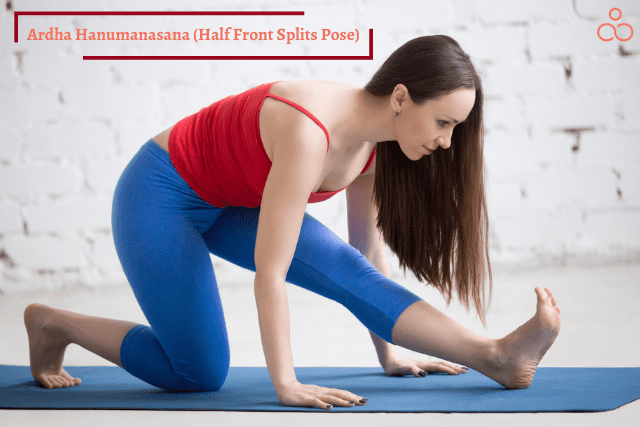
Yoga for soccer players can include Ardha Hanumanasana, also known as the half front splits pose. Philosophically, this pose is about finding a balance between flexibility and stability. Yoga is all about finding the right balance in every aspect of your mind and body.
This pose utilizes vital parts of your hip-leg region, including your hips, glutes, hamstrings, calves, heel cords, etc. Players who play any physical sports that involve running have a certain tightness in their hamstrings. This pose helps stretch and loosen that tightness, relaxing them. It also stretches your back and the muscles that run over the spine. This pose particularly strengthens the hips and legs, helping your body stay stable in various stances.
As it stretches the spine and makes it go through the motions slowly, it activates the spinal nerves. This helps release stress and gives you more emotional control.
Steps
- Start on the mat, kneeling near the end, facing the top. Bring one leg forward like in a lunge.
- Make sure your back leg is stable. You will be putting some pressure on that knee, so remember to use a thick mat or add some cushioning under it.
- Move from the lunge, straightening the front leg and pulling your toe toward your face.
- Place your hands on the ground or balance on your fingers. Some people also use blocks. Activate your spine, keeping it long. Try not to slouch in the position, as it will be incorrect.
- Come back to a lunge and repeat the process with the other leg.
Half Pigeon Pose
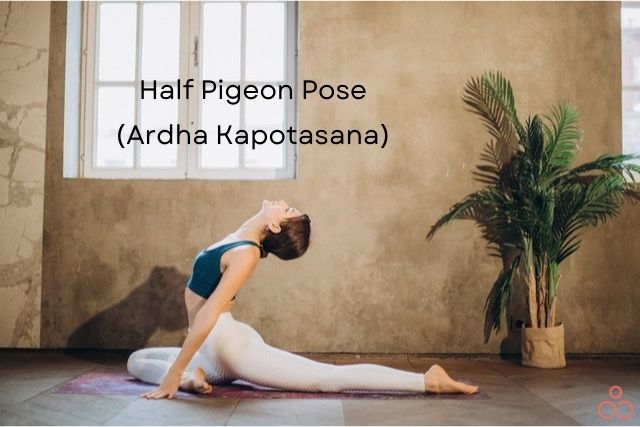
Soccer can be a high-tension sport. With a momentary mistake putting you behind in the game, you cannot risk a moment of unmindfulness. Legendary footballer Cristiano Ronaldo has emphasized how meditation and other anxiety-managing practices can help you become a better footballer.
Yoga for football players, like the pigeon pose, not only helps you physically but also releases mental stress. In Ayurveda, hips play a crucial part in mental peace, and the pigeon pose is great for moving and activating all the hip rotators and flexors. You get to stretch and strengthen your hips while helping your mental stability. While doing the pose, you also expand and stretch your inner thighs, helping loosen those muscles which are often tense due to playing soccer as well as training and practicing for it.
Steps
- Get on your hands and knees with your palms pressed to the floor.
- Move one knee between your hands; this will stretch the upper thigh muscles. You can pull your ankle closer to your hip to relieve the tension.
- You can choose to stay on your palms or slowly move your arms down and support yourself with your elbow. You can also choose to spread your arms forward, reaching out in a lowered bow-like position.
Wide-Angle Seated Forward Bend Pose
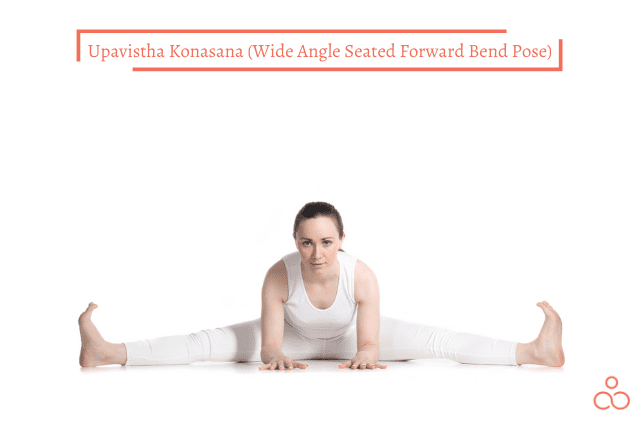
Groin injuries are quite common in football games. Groin and inner thigh injuries happen when the area becomes taut and strained from being overworked.
When you do a Upavistha Konasana, you stretch out your legs wide. This makes your inner thigh muscles, joint and joint muscles, backbone, and erector spinae muscle stronger. It also stretches the muscles of your groin, helping it become more flexible and less prone to injury.
Experts suggest that you should do this pose early in the morning or three/four hours after a meal, as this pose actively affects your abdominal muscles and organs. If you do it at the right time, it will improve the health of your digestive system. If you are a female player, this yoga pose for football players can help regulate and strengthen your reproductive organs.
Steps
- Sitting upright on the yoga mat, extend your legs open and wide.
- Inhale slowly, looking up as you expand your chest and straighten your spine. Your chest should be lifted.
- Feel the energy running from your core to the balls of your feet, pressing and strengthening them to keep your legs open.
- Bring your hands between your legs, palms down. Exhale and walk your hands forward and expand your upper body outwards, stretching your spine. As you stretch out your body, take deep breaths, feeling the energy running through you.
- Keep your legs wide and your upper body extended as you breathe. Try to dip in deeper every time you exhale.
- Stay for as long as you can, then exhale for the last time. Inhale as you raise your body, walking your hands back as you lift. Once your spine is upright, slowly close your legs.
Yoga for Athletes
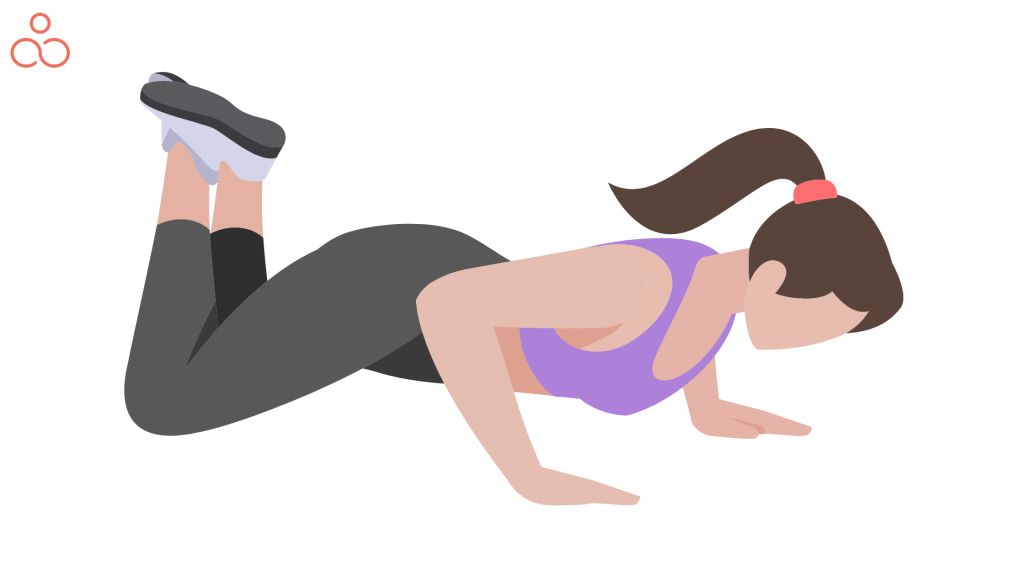
Adding yoga to training programs can not only help soccer players but also other athletes. Yoga puts you in an active flow, kickstarting your body. Blood is regulated steadily through the body, increasing blood flow in various organs from head to toe. This keeps your body parts healthy while stretching helps strengthen your bones and muscles.
From gymnasts to rugby players, yoga for athletes can help any player become better at their game. The key is to look for poses that help increase strength and flexibility in the parts of your body that are overworked while playing your sport. Remember that yoga also helps increase balance and stability, which can be crucial to avoid injuries. By staying stable and quick on your feet, you can prevent yourself from making mistakes that can lead to the loss of a game.
Final Thoughts
Yoga for football players can help achieve greater flexibility, balance, strength, and physical stability. Stretching for soccer players can be crucial, and as yoga stretches your body extensively, most athletes can reap the benefits of adding yoga to their training routine. Focus on poses that help you make the overused parts of your body stronger and more flexible.
Since yoga is simple and easy to do and continues, you can even do it every day. The most important part is staying consistent and maintaining a regular yoga practice so that it keeps your body active and healthy.

